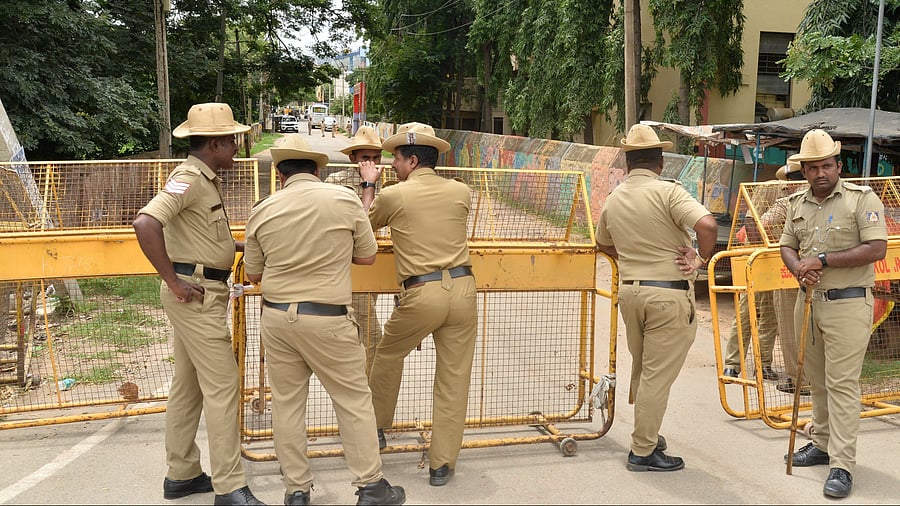
Image showing police personnel. For representational purposes.
Credit: DH File Photo
Ahmedabad: The Gujarat police on Wednesday said they have deported 16 of the 52 Bangladeshis, including a minor, detained in Ahmedabad about four months ago for living in the country without proper documents.
The remaining 36 undocumented Bangladeshis will be sent back to their country by March 15, an official said.
These illegal immigrants were involved in prostitution rackets and would transfer the proceeds of the illicit business to Bangladesh through bank accounts of bogus firms, said Assistant Commissioner of Police (Crime Branch) Bharat Patel.
The crime branch had detained 52 Bangladeshis, including two minors, from areas like Chandola lake, Dani Limda and Shah-E-Alam in October last year, he said. They had stayed in the city for periods ranging from 2 to 10 years.
“In coordination with the Union Home Ministry and the Ministry of External Affairs, we collected evidence against these illegal immigrants and established beyond doubt that they were citizens of Bangladesh and had been living in the city using fake documents,” Patel told reporters.
The official said police have deported 16 illegal immigrants, including a minor, and Bangladesh accepted them. The others, among them a minor, will be deported by March 15 as the legal process to send them back is currently on, said the officials.
A probe is also underway to determine if these undocumented migrants were involved in any anti-national activity or were linked to the terror outfit Al-Qaeda in the Indian Sub-Continent (AQIS) during their stay here, the official said.
The police action against the foreigners followed after the city crime branch came across two cases where women from Bangladesh were trafficked into India with fake identities and forced into prostitution here, he said.
To find out the settlements of illegal immigrants, police studied satellite images and historical topographic maps of areas surrounding the Chandola lake, said Patel, adding that such data is useful in determining how topography and property have changed over time.
These maps and satellite images from 1980 and subsequent years suggested that the area of the lake shrank due to the encroachment by Bangladeshi nationals over these years, he said.